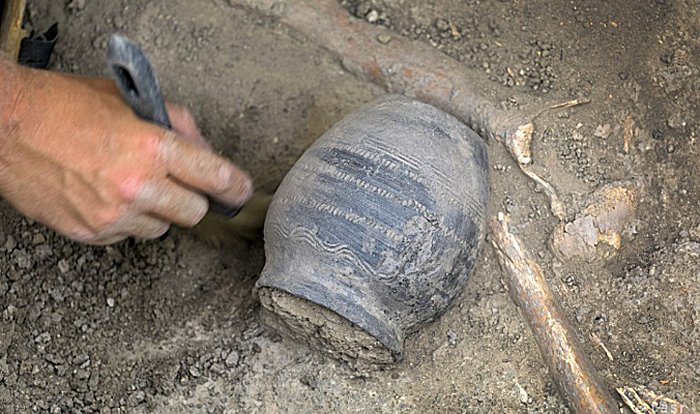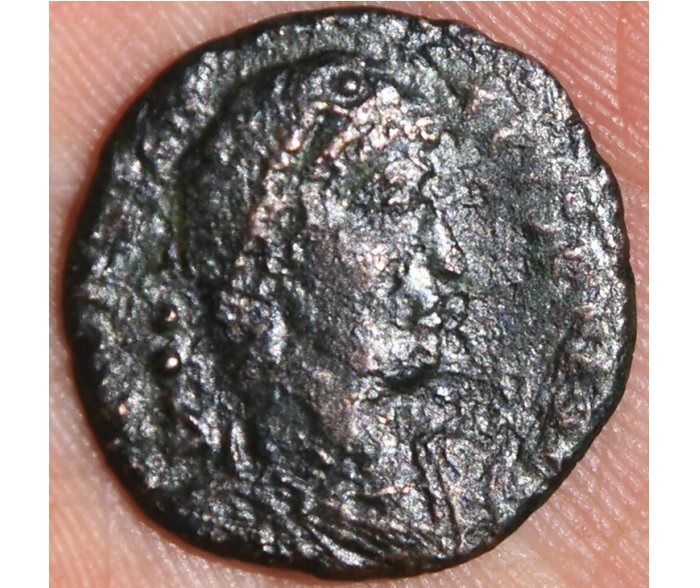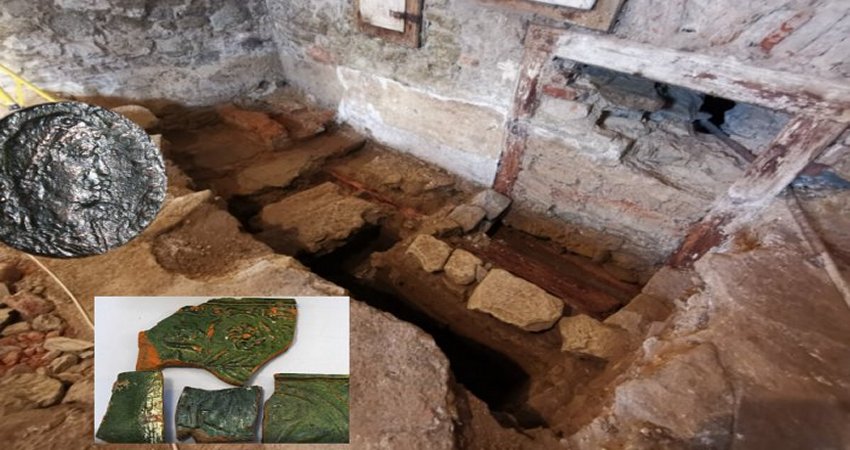Conny Waters – MessageToEagle.com – A fourth-century coin depicting the emperor Constantius II, who ruled between 337 and 361 AD was unearthed in a town Spišské Vlachy, in eastern Slovakia.

Findings in Spišské Vlachy. Image credit: TASR / Dano Veselský
The 1,600-year-old artifact is the oldest and most valuable among the findings discovered during the excavations that lasted from October 2019 to March 2020.
Mária Hudáková, the head of the archaeological research at the Museum of Spiš Territory in Spišská Nová Ves, informed that the researchers also unearthed findings that can be linked with the construction and reconstruction of the object.

A coin from the 4th century. Image credit: TASR
Other findings include older entrances to the object, remains of the wooden floor from the second half of the 18th century and a heating device in the form of an oven with a sweeping opening in the corner of the room,’ writes The Slovak Spectator.
Fragments of kitchen ceramics and Polish and Hungarian coins (Polish engravings of King Sigismund III, and also Austro-Hungarian from the time of Francis II) were also uncovered. Researchers believe this wooden building could serve as a pub at least until the first half of the 19th century, as they found wall graffiti, pictures of gallows, and a part of a sword. There is also an entrance to the cellar where beer and wine were kept.
The 4th-century coin displaying Constantius II could have also been placed in the town hall as a kind of offering, a practice that was believed to protect the building. However, the researchers say that the discovery of the coin may also document trade with Rome.
Image credit: TASR
“It is interesting that coins made it from the west to Spiš,” said archaeologist Matúš Hudák, as quoted by Spiš Korzár. “How could they do trade at such distances and use coins as currency?”
The research team uncovered layers from the Middle Ages, the 16th to the 17th century, and modern history, which is related to the building itself and its later reconstructions.
See also: More Archaeology News
“We see floors and plastering from this era,” Hudák said. The original layer where people walked is right at the bottom. The original level of terrain was about half a meter lower than it is today.”
The terrain rose as a result of a huge fire, and additionally, at the end of the 19th century, this building was damaged and walling was used as a cave-in. It was later rebuilt and used by volunteer firefighters, according to archaeologists.
Written by Conny Waters – MessageToEagle.com – AncientPages.com Staff Writer







